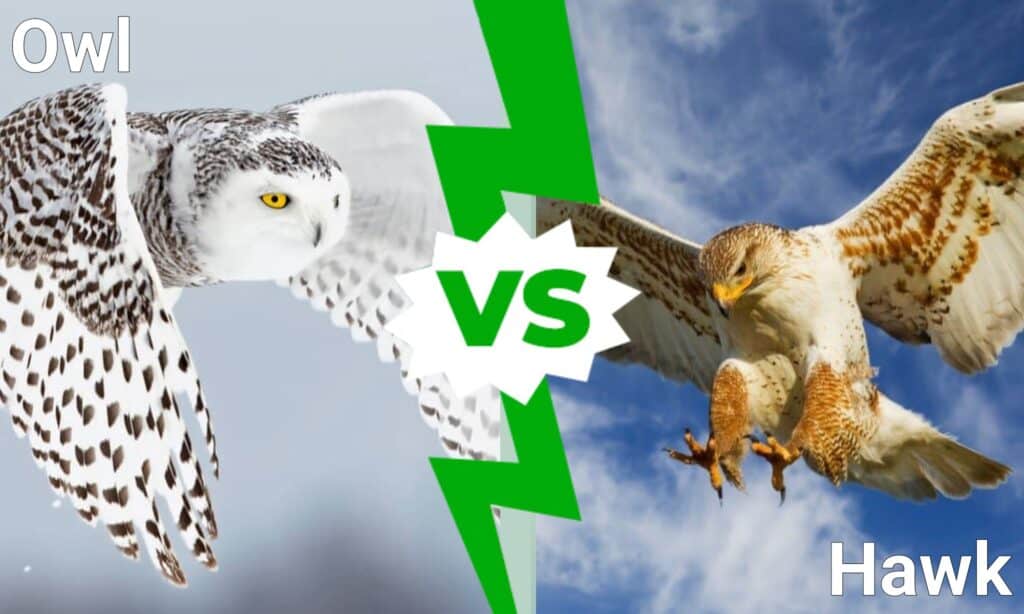
When comparing an owl vs hawk, the differences are easy to detect. Owls have round, disc-shaped faces, and disproportionally large eyes, while hawks have sharp features and small eyes. But this is far from the only way to tell these two incredibly unique birds apart! To figure out which has the edge in an altercation, we need to get into those differences.
Owl VS Hawk: Physical Characteristics
Owls and hawks are both considered to be raptors, a term that applies to birds of prey. However, owls and hawks are in separate raptor groups. Though both are true birds of prey, the differences between the two make it quite clear which is which!
Physical Characteristics To Identify Owls
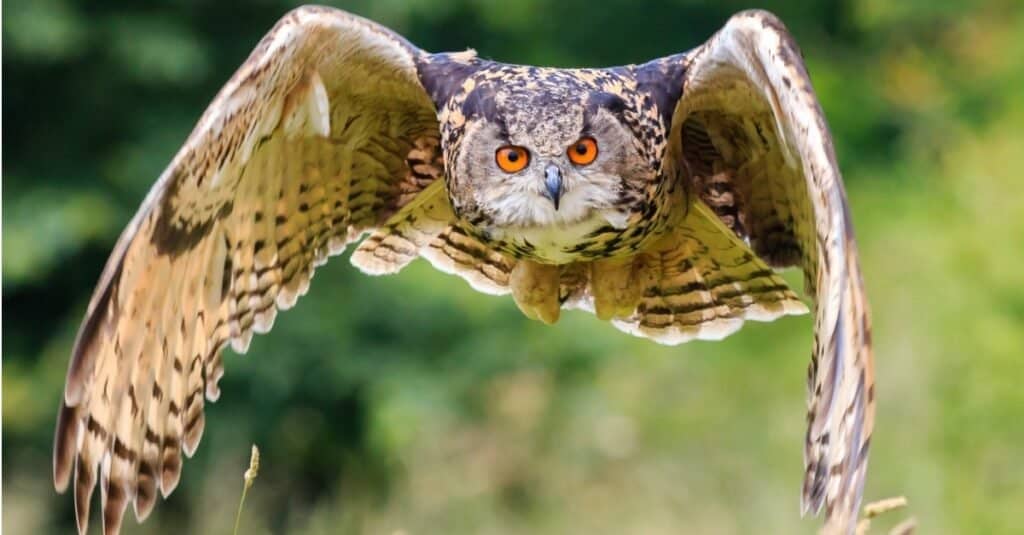
The best way to identify an owl is by their large eyes and heads, as well as their ability to rotate their heads up to 270 degrees!
©Richard Whitcombe/Shutterstock.com
Owls are most easily identified by their large eyes and heads, and particularly by their ability to rotate their heads up to 270 degrees. Owls have heads that blend in with the thickness of their overall bodies. Most species of owls are much larger than hawks, though individual size differs. Their bodies are stouter and less streamlined overall, making them less agile but often stronger than a hawk of comparable size.
While not an exhaustive list, other key features common in most owl species are:
- Heads are bigger compared to body mass
- Covered with thick feathers in a wide range of colors
- A variety of striped, dotted, or patterned feathers
- Short, curved beak that tilts down
- Strong feet with two front and two back toes that can swivel to the front with a feathered or furry appearance
- Razor-sharp talons up to four inches long or more
- Feathers with fibers that minimize sound for silent flight
- Shorter tails
- Binocular vision in nocturnal conditions
- Parabolic ears
- Females are darker than males but slightly larger
Physical Characteristics To Identify Hawks
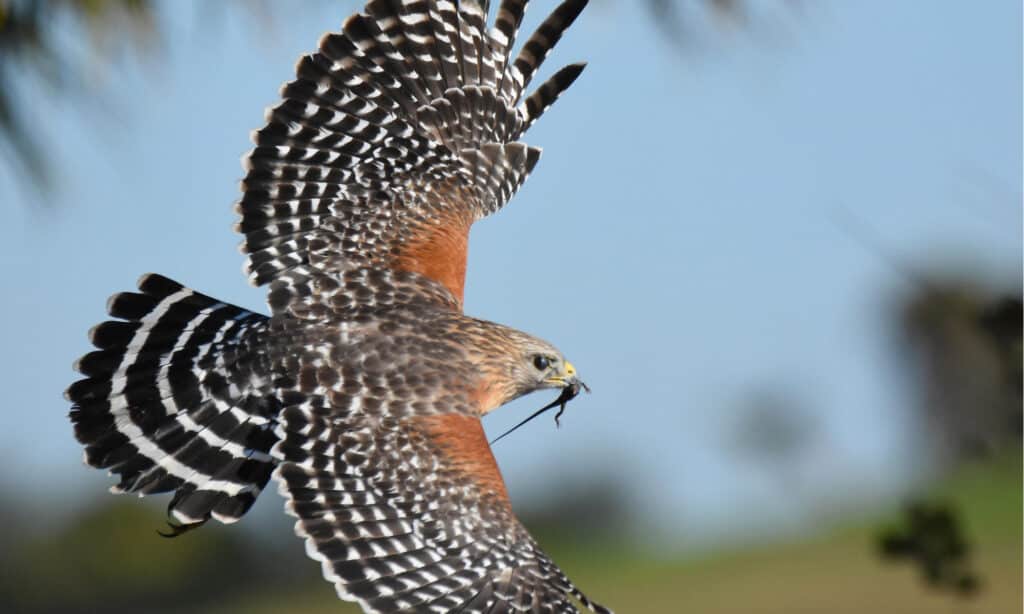
Commonly, hawks are most easily identified by their smaller eyes, curved beaks, and their smaller heads.
©MTKhaled mahmud/Shutterstock.com
Hawks are known for their slim, streamlined bodies, smaller heads, and wickedly sharp black beaks. Hawks are smaller on average than owls, though this varies by individual species as well. Other common characteristics that identify a hawk are:
- Head is smaller than body mass
- Sleek feathers that contour close to the body
- Various colorations with minimal patterns
- Possible dark streaks or spots on the neck, or white streaks on wings
- Alert and erect posture when perched
- Some species have upper teeth called Tomial teeth
- Yellow feet with a scaly appearance
- Three front toes, one back toe
- Curved black talons around two inches long
- Sleek, thick, broad feathers for a fast and efficient fight on rising thermals
- Long tail-feathers
Owl VS Hawk: Similar Habitats, Different Behavior
Owls and hawks often share the same habitat, but their behaviors are as different as night and day and they do not often compete for food or territory. In fact, the only comparison one can make between owls and hawks is hunting for live prey. Once the behavior and hunting methods of each are fully investigated, we may be able to answer the question of which would win in a fight, if these two animals were likely to encounter each other at all!
Owls Are Nocturnal Predators
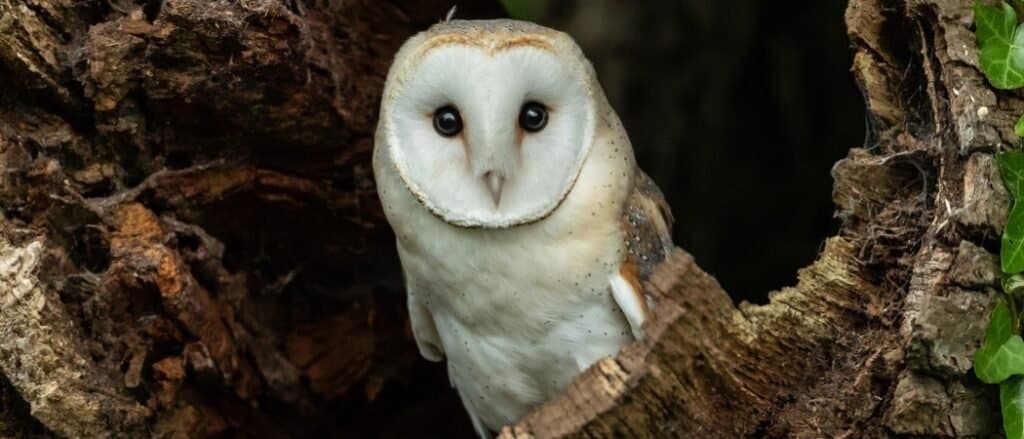
Another way to easily tell a hawk and owl apart is by the time of day. Owls are nocturnal and only hunt at night, though occasionally you might see one before sunset!
©iStock.com/Alan Walker
Owls are nocturnal and exclusively hunt at night. Owl hoots are the most recognizable bird call and are most active between late evening to sunrise. Owls can be single, mated, or even live in small families to roost together. This is to keep warm or to protect each other from predators or competition. Owls have the gift of silent flight, and do not travel on thermals as frequently and flap their wings more than hawks.
Other environmental and behavior traits common for owls
- Mate for life
- Crush prey with their talons and consume when caught
- Stalk prey using sight and sound, then ambush silently by knocking into smaller animals and blinding them with their wings
- Prey on the nests of other birds, particularly crows, who mob them during the day in retaliation
- Courtship consists of the male calling the female and presenting her with gifts of food and nesting provisions
- Eggs are white to brown with splotches of lighter color
Hawks Hunt During The Day
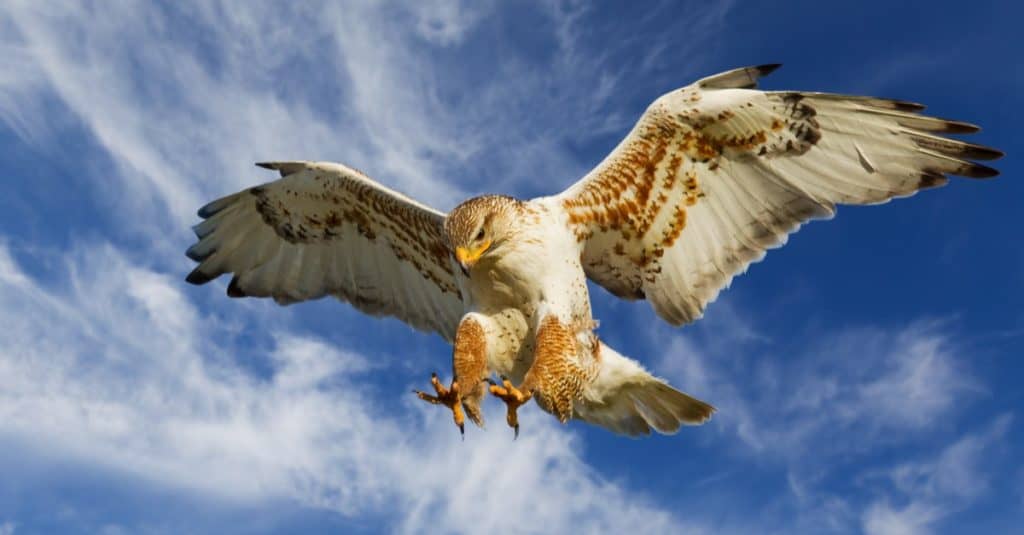
On average, hawks are one of the most common raptors seen by humans. This has a lot to do with their preferred time to be active, during the day!
©Stephen Mcsweeny/Shutterstock.com
Hawks are diurnal, meaning they only hunt during the daylight hours. A hawk is active between sunrise and sunset and attacks with speed and precision by diving at the target. They snatch prey with their powerful beak and carry it off to eat in a secure place. Only prey too heavy to carry is consumed immediately. Hawks mate for life but stay solitary outside of mating season when both parents hatch the eggs together.
Other Environmental and Behavioral Traits Common For Hawks
- Hawks do not live in flocks, and groups of flying hawks are only seen when migrating
- Fly by flapping and gliding on thermals
- Can dive in a teardrop shape at over 220KM an hour
- Will only consume dead flesh when sick or old
- Courtship is a dominant display of agile flying and high-pitched sounds
- Eggs are tinged blue or white with brown spotting
Owl VS Hawk: Which Is More Likely To Win In A Fight?

Hawks are fast and agile, and they take less risks than owls because of their highly developed cranial nerves.
©iStock.com/Josiah S
When it comes down to it, hawks are powerful animals, and both owls and hawks are on our list for most dangerous birds. However, we held on to one fact about each of these raptors that truly answers all our questions of who wins in a fight. Hawks are far more agile than owls, but owls are often much stronger. Owls have truly dangerous talons that can pierce a human skull, but hawks are quicker. So, are they evenly matched?
Turns out, in this animal fight it would all come down to brains. Or, how the hawk and owl both have brains uniquely suited to their hunting style. Hawks have advanced cranial nerves that allow them to quickly judge a situation. This has the added benefit of a hawk taking much fewer risks than other birds. Unfortunately, that sense of reason is why a hawk will lose a fight against an owl of comparable size.
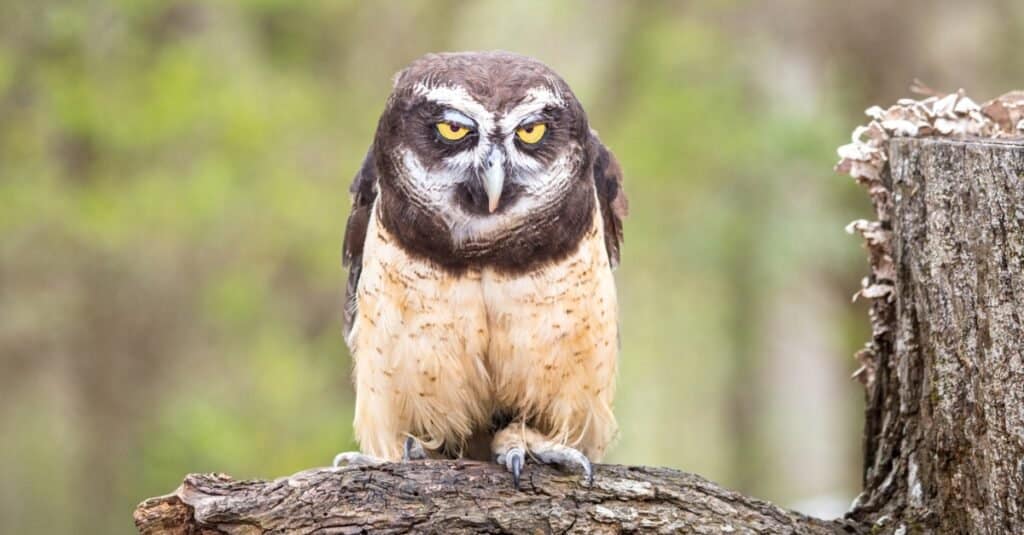
An owl’s brainpower is dedicated to their excellent eyesight and hunting skill. Which means they have no fear. Hawks are powerful, but owls are actually crazy!
©iStock.com/garytog
Owls have an folkloric reputation for being wise. In fact, owls have brains that are dedicated to their excellent eyesight. Their lack of extra brain space has left no room in the owl for sensing fear. Combined with the silent attack, nocturnal hunting, and massive attack power, a hawk would lose the fight.
However, hawks are far more rational than the than the fearless predator known as the owl. They are unlikely to put themselves in the position to be attacked at all!
The photo featured at the top of this post is © slowmotiongli/Shutterstock.com
Thank you for reading! Have some feedback for us? Contact the AZ Animals editorial team.






